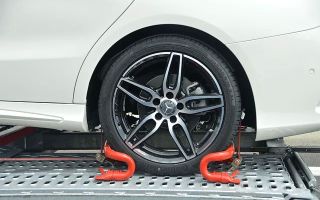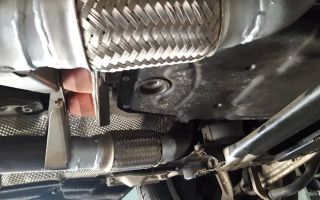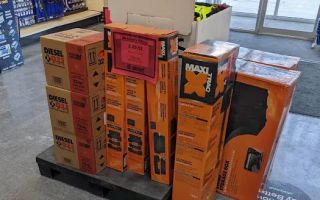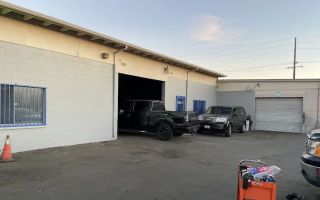How to Choose the Best Tire to Avoid Blowouts
As a car owner and frequent driver, I've experienced firsthand the terrifying moment of a tire blowout. It’s one of those situations that can occur suddenly, leaving you stranded on the side of the road, facing expensive repairs, or worse, an accident. Fortunately, there are steps we can take to reduce the likelihood of blowouts by making smarter decisions when selecting and maintaining our tires. Over the years, I’ve learned that the right tire can make all the difference in ensuring both safety and efficiency on the road.
The key to avoiding blowouts isn't just about buying the most expensive or popular tire. It involves understanding the nuances of tire selection, considering factors like tire type, load capacity, tread pattern, and maintaining proper tire pressure. In this article, I’ll guide you through the essential elements you need to consider when choosing tires that can help prevent blowouts, along with practical tips that I’ve learned over time.

MR. TIRE INC.
2078 New York Ave, Huntington Station, NY 11746, USA
1. Understanding Tire Load Capacity
One of the most important factors in selecting a tire that can prevent blowouts is understanding its load capacity. Every tire comes with a load rating, which indicates how much weight it can safely carry. Overloading your vehicle can put excessive pressure on your tires, making them more prone to heat buildup and, eventually, blowouts.
When I first bought my car, I didn’t realize how important it was to choose tires that could handle the weight of both my vehicle and any additional cargo. I learned the hard way that using tires with an insufficient load capacity could lead to premature wear and even dangerous blowouts. Always check your car's manual to determine the correct load capacity for your vehicle and choose tires that can comfortably handle that weight. Over time, I’ve found that opting for slightly higher-rated tires can provide an extra safety buffer, especially when I carry heavy loads or go on long road trips.
In addition to the load capacity, it’s also important to understand the load index of the tire. This number represents the maximum load the tire can carry and is often found on the tire’s sidewall. If you frequently drive with heavy loads or tow a trailer, it’s worth investing in tires with a higher load index to prevent potential blowouts.

MR. TIRE INC.
2078 New York Ave, Huntington Station, NY 11746, USA
2. Selecting the Right Tire Type for Your Driving Conditions
Different driving conditions demand different types of tires. Whether you're driving on highways, city streets, or rugged terrain, the type of tire you choose can have a significant impact on preventing blowouts. Let me share a personal story: during a cross-country road trip, I had to replace my tires because the ones I had were not suitable for the long-distance and diverse driving conditions. The tires were great for city driving, but they didn’t hold up well on the highway, particularly on hot days.
Choosing between all-season, summer, and winter tires depends on your geographical location and driving habits. If you're in a region with extreme weather conditions, selecting the appropriate tire type is crucial. Summer tires, for example, provide optimal performance in dry conditions but can suffer in wet or cold weather, leading to poor traction and an increased risk of blowouts in such conditions. On the other hand, winter tires offer better grip in snow and ice but may wear out faster if used in warm temperatures.
For those who drive year-round in a temperate climate, all-season tires are a practical choice. They offer a balanced performance in various conditions, but I’ve learned that they might not be as durable as specialty tires designed for specific weather. It’s a good idea to assess your driving environment and choose the tire type that best suits your needs.
3. Tire Pressure and Maintenance
Maintaining the correct tire pressure is another vital factor in avoiding blowouts. I can’t stress enough how important this is. When I first started driving, I never thought about the tire pressure too much, but I soon learned that under-inflated or over-inflated tires are much more prone to failure. Low tire pressure increases the stress on the tire, while over-inflation can cause the tire to be too stiff, both of which can lead to a blowout.
Every vehicle comes with a recommended tire pressure, which can usually be found on a sticker inside the driver’s side door. It’s essential to check your tire pressure regularly, especially before long trips. I now make it a point to check the tire pressure at least once a month using a good-quality gauge. This routine has not only extended the life of my tires but has also improved my vehicle’s overall fuel efficiency.
If you're unsure about how to adjust the tire pressure, many gas stations have air compressors where you can top up your tires, or you can invest in a portable air compressor for convenience. Proper tire maintenance, including regular rotation and balancing, can also contribute to tire longevity and reduce the chances of a blowout. It’s important to stay on top of these basic checks to ensure your tires remain in good shape.
4. Choosing the Right Tread Pattern
The tread pattern on a tire plays a significant role in both traction and durability. The tread helps the tire grip the road, channel water away, and provide stability. Over the years, I’ve learned that the right tread pattern can help prevent blowouts, especially in wet or snowy conditions.
For example, when I drove through areas that had a lot of rain, I noticed my tires with deeper, more aggressive treads performed better at preventing hydroplaning. Conversely, when I was in dry conditions, tires with a simpler, more uniform tread pattern offered a smoother, quieter ride. It’s essential to consider the driving conditions you frequently encounter when selecting a tire with the appropriate tread pattern.
There are several types of tread patterns to choose from, including symmetric, asymmetric, and directional treads. Symmetric treads are the most common and work well for everyday driving. Asymmetric treads offer a better balance between performance and comfort, making them a great option for high-performance vehicles. Directional treads are best for vehicles that encounter a lot of wet or snowy conditions, as they channel water more efficiently to reduce the risk of blowouts from aquaplaning.
5. The Importance of Tire Age
Over time, the rubber in your tires naturally deteriorates, which can make them more prone to blowouts. I’ve had to replace tires before because they were simply too old. Even if your tires look fine on the outside, the rubber can degrade from heat, UV exposure, and other environmental factors. A blowout can easily occur when tires age past their prime.
Most tire manufacturers recommend replacing your tires every six years, with a maximum lifespan of ten years, regardless of how much tread is left. This is something I didn’t know until I had to replace my own tires at the 7-year mark, even though the tread was still good. It’s important to keep track of your tire’s age and replace them when needed, especially if you live in areas with high temperatures or intense sunlight, which can cause faster degradation of the rubber.
6. Always Have a Backup Plan
Even with the best tires, blowouts can still happen unexpectedly. I’ve been in situations where even though I had the right tires and took great care of them, a random nail or sharp object still punctured the tire. That’s why I recommend always carrying a tire repair kit or having access to a towing service. When I was on a long road trip and experienced a flat, I was able to quickly fix the tire using a plug kit and continue on my journey without delay.
If you're not comfortable with tire repairs or want to be extra cautious, having a reliable roadside assistance service can give you peace of mind. I now keep the number of my local towing company saved on my phone, just in case I need a tow or flat tire assistance. If you ever find yourself stuck, towing services like Rescue & Towing can help you get back on the road safely and quickly.























